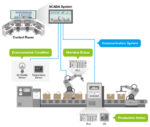New charger supports expanding EV infrastructure
Hospitals, train stations, retail stores, industrial buildings, multi-unit residential buildings and more have access to a new reliable charging solution for New Zealand EV drivers. The new EVlink Pro AC from Schneider Electric is promising to support the growing demand for electric vehicles and charging infrastructure amid increasing business and consumer transition to EVs. From hospitals to retail stores and multi-unit dwellings, the new charging station has been designed specifically for sustainable and efficient buildings of the future. It is an advanced solution for electricians and other specialists that meets the world-leading compliance standards set by the IEC (International Electrotechnical Commission) in Europe. The new charging station supports optimised energy consumption, maximised uptime and efficiency, and helps ensure a seamless user experience for EV installers, operators, and drivers. It has an enhanced degree of repairability with easily accessible spare parts that make the unit more serviceable. Charging for an hour on the EVlink Pro AC can give up to 120 kilometres of driving range, depending on the vehicle, and a completely flat battery could be charged in around six to eight hours to get to an optimal almost full charge – ideal for people who will charge at their workplace or dwelling. The station includes a modem as an optional accessory. The EVlink Pro AC charger helps to offset on publicly available EV infrastructure as the transition accelerates in line with the resolution of a backlog of previous orders and the resumption of the full petrol tax. At present, according to the EECA’s 2023 survey of BEV (battery EV) and PHEV (plug-in hybrid EV) owners, 97% of EV owners are charging at home at least some of the time, and the majority are charging off-peak, with 69% having access to off-peak pricing plans; 54% of home charging starts between 9pm […]










